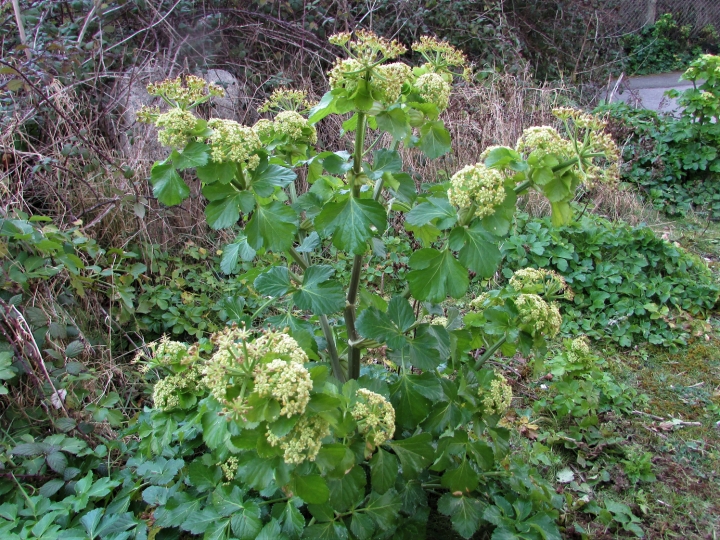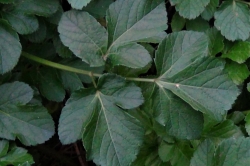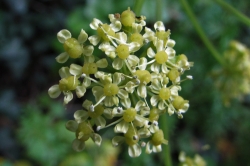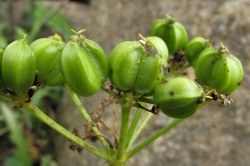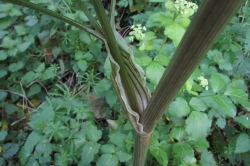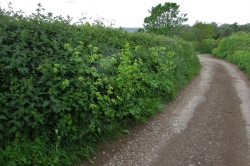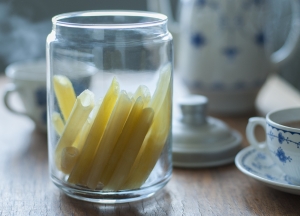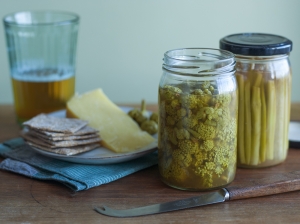Mainly a plant that likes a coastal breeze but once established seems fine growing inland.
Home / Hedgerow Guide /
Alexanders
Alexanders
| Hedgerow Type | |
| Common Names |
Horse Parsley |
| Scientific Name |
Smyrnium olusatrum |
| Season Start |
Jan |
| Season End |
Sep |
Please note that each and every hedgerow item you come across may vary in appearance to these photos.
Leaves
Vibrant, glossy, yellow/green to darker green leaves. Ovate and
bluntly toothed in groups of three, trifoliate.
Stem
Thick, succulent and resembling a rounded celery stalk. The base of the leaf stem is shrouded where it joins the main stem.
Habitat
Mainly coastal areas growing in great swathes along roadsides,
cliffs, sea walls and path edges but can be found inland
occasionally in meadows and the edges of woods.
Possible Confusion
Angelica leaves can look similar but are not as vibrant green and
not as shiny and they are found growing in a different habitat to
Alexanders. Wild Angelica is edible but very bitter and tough.
Smell
Fragrant and sweet, almost spicy.
Taste
A unique taste slightly reminiscent of celery and said to taste like
myrrh although I’m not sure what myrrh tastes like.
Frequency
Common in coastal areas.
Collecting
The new shoots can sometimes be picked through winter and
into spring but the most reliable time to collect them is from
February until they start to flower, when they become tough and woody.
When the shoots become tough the flowers and flower buds can
be used like broccoli or cooked in a light batter.
The seeds can be dried and used as a spice, a bit like black pepper.
The leaves can be collected when they are young and fresh at any
time of year and used sparingly in salads or as a green.
The roots can be scrubbed, peeled and sliced and roasted like parsnip.
Medicinal Uses
Alexanders were used in the past for the treatment of
asthma, menstrual problems and healing wounds, but are
not particularly used in medicine today.
Other Facts
Brought over by the Romans this edible was once much used in
British cooking but has now been very much replaced by celery.
The leaves were used as a fodder crop.



 (52 votes, average: 3.71 out of 5)
(52 votes, average: 3.71 out of 5)